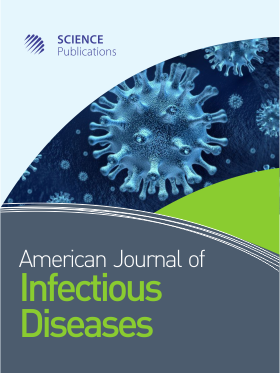Comparative Study of Antibacterial Susceptibility Patterns of the Bacteria Isolated from Patients' Blood Samples over Two Periods
- 1 Shiraz University of Medical Sciences, Iran
Abstract
Problem statement: Due to continuous changes in the frequencies and antibacterial susceptibility patterns of nosocomial pathogens, periodical surveillance of these fluctuations could help the clinicians to treat hospitalized patients more efficiently whenever empirical therapies need to be considered. This study was conducted to compare the prevalence of the bacteria recovered from bloodstream samples by Bactec 9240, over the two periods of 2001-2004 and 2005-2008 and to evaluate their antibacterial susceptibility patterns. Approach: Totally, 3622 culture positive blood samples were analyzed over the periods. Antibacterial susceptibility patterns of the isolates were determined by standard disk diffusion (Kirby-Bauer) method. The data were compared in terms of quantity and quality of the pathogens and based on their distributions in three main wards. Results: Changes were observed in bacterial composition and frequencies of them, between the two periods. Compared with the first pried, increased frequencies of antibiotic resistant bacteria such as S. aureus, enterococci, acintobacter and pseudomonas were noticed in the second period. Most patients were admitted to pediatrics, followed by adults and neonates wards. Increased antibiotic resistance of the majority of the bacteria in the second period indicates the decreased efficacy of corresponding antibiotics. However, overall efficacy of some antibiotics such as ciprofloxacin and amikacin against Gram positive bacteria preserved. Conclusion: Trend of composition of the bacteria from first to second period could suggest the domination of antibiotic resistant bacteria over the sensitive ones. Appropriate strategies including strict control measures and rational prescription of the effective antibiotics may retard the trend accordingly. Vancomycin and imipenem were the most active antibiotics against Gram positive and negative bacteria. Combination of these two antibiotics is highly recommended for empirical therapy.
DOI: https://doi.org/10.3844/ajidsp.2011.1.7

- 6,438 Views
- 3,919 Downloads
- 0 Citations
Download
Keywords
- Comparative study
- blood samples
- antibiotic resistance
- control measures
- antibacterial susceptibility patterns
- S. aureus
- standard disk diffusion
- Methicillin Resistant S. aureus (MRSA)
- Pseudomonas aeruginosa
